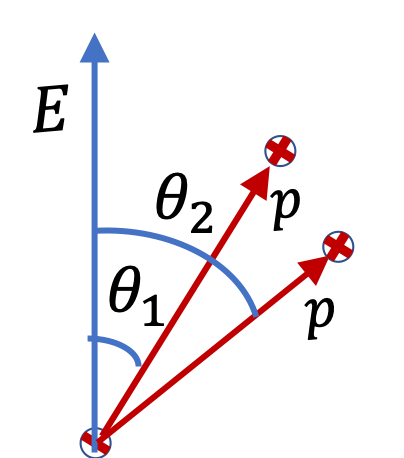Example 33.10. Energy for Flipping a Dipole Upside Down.
A dipole of moment \(50 \times 10^{-12}\text{ C.m}\) is aligned with an electric field between two parallel plates separated by \(5\text{ mm}\) that have a potential difference of \(1\text{ kV}\text{.}\) How much energy will it take to flip the orientation of the dipole?
Answer.
\(20\ \mu\text{J}\)
Solution.
From the potential different across two parallel polates and their separation, we find that the maginutde of constant electric field between the plates is
\begin{equation*}
E = \dfrac{\Delta \phi}{d} = \frac{1000\ \text{V}}{0.005\ \text{m}} = 2.0\times 10^{5}\text{ V/m}.
\end{equation*}
From the formula for the dipole potential energy we get the following expression for change in energy for flipping from \(\theta=0\) to \(\theta=\pi\text{ rad}\text{.}\)
\begin{equation*}
\Delta U = \left(-pE\cos\pi\right) - \left(-pE\cos 0 \right) = 2pE.
\end{equation*}
Putting numbers in now, we get
\begin{equation*}
\Delta U = 2\times 50 \times 10^{-12}\text{C.m} \times 2.0\times 10^{5}\text{ V/m} = 20\ \mu\text{J}.
\end{equation*}



